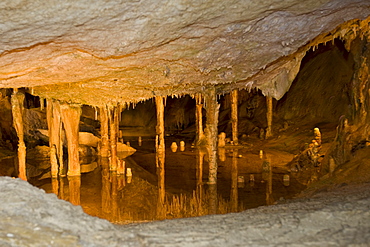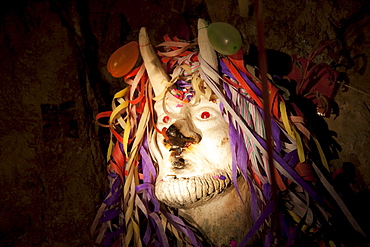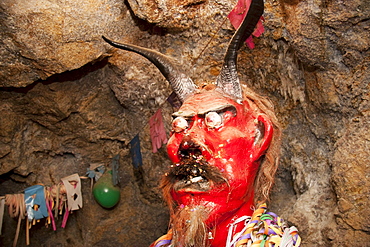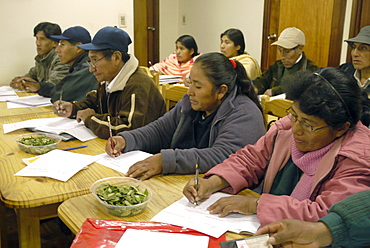Recent searches
Loading...
1350-871 - Poporo and stick, Pre-Columbian goldwork collection, Gold museum, Museo del Oro, Bogota, Colombia, America
1350-1840 - Coca Cola logo painted on wall, Santa Rosalia, Baja California Sur, Mexico
1350-872 - Poporo and stick, Pre-Columbian goldwork collection, Gold museum, Museo del Oro, Bogota, Colombia, America
1350-873 - Poporo, Pre-Columbian goldwork collection, Gold museum, Museo del Oro, Bogota, Colombia, America
1184-2102 - Roasting coca beans in a Cocoa factory, Batete, Bioko, Equatorial Guinea, Africa
801-1895 - Castle of Coca, built 15th century, Coca, Segovia, Castile y Leon, Spain, Europe
801-1894 - Castle of Coca, built 15th century, Coca, Segovia, Castile y Leon, Spain, Europe
803-281 - World of Coca Cola in Pemberton Park, Atlanta, Georgia, United States of America, North America
1109-2558 - Amazon Rainforest storm, Coca, Ecuador, South America
1109-2561 - Frog in the Amazon Rainforest at night, Coca, Ecuador, South America
1109-2559 - Dugout canoe boat ride in the Amazon Rainforest, Coca, Ecuador, South America
1109-2560 - Spectacled caiman (Caiman crocodilus) (Common caiman) (White caiman), Amazon Rainforest, Coca, Ecuador, South America
1109-2188 - Dugout canoe boat ride in narrow waterway, Amazon Rainforest, Coca, Ecuador, South America
1109-2204 - White cacao tree, Amazon Rainforest, Coca, Ecuador, South America
1109-2216 - Jungle Canopy Walk in Amazon Rainforest at Sacha Lodge, Coca, Ecuador, South America
1109-2219 - Amazon Rainforest Canopy Walk at Sacha Lodge, Coca, Ecuador, South America
1109-2192 - Amazon Rainforest dugout canoe ride, Sacha Lodge, Coca, Ecuador, South America
1109-2201 - Papaya tree, Amazon Rainforest, Coca, Ecuador, South America
1109-2193 - Amazon Jungle walkway at Sacha Lodge, Coca, Ecuador, South America
1109-2212 - Tarantula, Amazon Rainforest, Coca, Ecuador, South America
1109-2215 - Amazon Rainforest at Sacha Lodge, Coca, Ecuador, South America
1109-2214 - Amazon Rainforest at Sacha Lodge, Coca, Ecuador, South America
1109-2178 - Walking in the Amazon Rainforest at Sacha Lodge, Coca, Ecuador, South America
832-370615 - Coca Cola Beach in Siofok at Lake Balaton, Hungary, Europe
832-332674 - Restaurant Jockey Club, Ibiza, Baleares, Spain
832-332686 - Coca de ca Marca dripstone caves near Sant Miguel, Ibiza, Baleares, Spain
832-332687 - Coca de ca Marca dripstone caves near Sant Miguel, Ibiza, Baleares, Spain
832-297783 - Young Argentinean woman cupping coca leaves (Erythroxylum coca) in her hands, Tren a las Nubes or Cloud Train station near Laguna de los Pozuelos, Jujuy Province, Argentina
832-272081 - Horse at Salto del Laja, the biggest waterfall from Chile, river Rio Laja, Chile, South America
832-272080 - Horse at Salto del Laja, the biggest waterfall from Chile, river Rio Laja, Chile, South America
832-53711 - Skull with a coca leaf on a cemetery of mummies, Chauchilla, near Nasca, Atacama Desert, Peru, South America
776-3586 - World of Coca Cola in Pemberton Park, Atlanta, Georgia, United States of America, North America
776-3571 - Coca Cola sign on Peachtree Street, Atlanta, Georgia, United States of America, North America
776-3554 - Dr. John Pemberton statue, World of Coca Cola, Pemberton Park, Atlanta, Georgia, United States of America, North America
776-3553 - World of Coca Cola in Pemberton Park, Atlanta, Georgia, United States of America, North America
1116-25172 - Ceramic figure of el Tio or Supai, a creature with horns, gleaming eyes and a big penis, that in fact is not really satanic. It was introduced by the Spaniards in the 16th Century to the mines of Potosi. According to tradition, el Tio (The Uncle) rules over the mines of Cerro Rico, simultaneously offering protection and destruction. Over 500 chambers with statues to honour him have been constructed in Cerro Rico, so miners can leave offerings of tobacco, liquor and coca leaves to invoke his goodwill and protection., Potosi Department, Bolivia
1116-25174 - Ceramic figure of el Tio or Supai, a creature with horns, gleaming eyes and a big penis, that in fact is not really satanic. It was introduced by the Spaniards in the 16th Century to the mines of Potosi. According to tradition, el Tio (The Uncle) rules over the mines of Cerro Rico, simultaneously offering protection and destruction. Over 500 chambers with statues to honour him have been constructed in Cerro Rico, so miners can leave offerings of tobacco, liquor and coca leaves to invoke his goodwill and protection., Potosi Department, Bolivia
1116-25173 - Ceramic figure of el Tio or Supai, a creature with horns, gleaming eyes and a big penis, that in fact is not really satanic. It was introduced by the Spaniards in the 16th Century to the mines of Potosi. According to tradition, el Tio (The Uncle) rules over the mines of Cerro Rico, simultaneously offering protection and destruction. Over 500 chambers with statues to honour him have been constructed in Cerro Rico, so miners can leave offerings of tobacco, liquor and coca leaves to invoke his goodwill and protection., Potosi Department, Bolivia
857-70230 - The new World of Coca-Cola attraction in Atlanta, Georgia
857-8065 - Coca paste at a jungle lab along the Vaupes River in Columbia.
857-8053 - Picking Coca leaves in the Vaupes River Basin, Colombia.
857-8066 - Coca paste at a jungle lab along the Vaupes River in Columbia.
857-8058 - Lime-filled Poporo used by the Kogi when chewing coca leaves.
857-8052 - Picking Coca leaves in the Vaupes River Basin, Colombia.
1196-227 - Wearing tree bark cloth masks and skirts, dancers representing fish spirits are invited during the season of the peach palm harvest to drink the juice. it is a feast and ritual exchange: the host group offers the spirits large quantities of peach palm juice, smoked meat and fish, and shaman-blessed coca and snuff. the visitors are the costumed dancers impersonating animal spirits. people eat the meat and fish, animal spirits receive the fruits of peach palm, which are cultivated, harvested, and processed by humans. this exchange expresses the idea that people and animals depend on each other for survival and reproduction. vaupes basin, eastern colombia amazon, population: 600
1194-44 - BOLIVIA FUNDAWI: training a group at the FUNDAWI office in La Paz. Coca leaves on the table for chewing
1194-40 - BOLIVIA ECOTOPS projects in Alto Beni. Sandra Gonzales clearing weeds from the family plot, where many crops including cacao, bananas, beans, vegetables and coca are growing
1194-382 - Colombia anti coca-cola and multinational corporation poster. Bogota
817-383944 - In front of a coca-cola ad, a poor tribal man is seated. He is surrounded with two men sculpting tourist souvenirs. Nathdwara, Rajasthan, India.
975-112 - A bill board advertising Coca Cola at Christmas time with a truly Rwandan Twist. It's prominence illustrates the far reaching appeal of the brand. Kigali, Rwanda, East Africa
832-17005 - LKA, Sri Lanka, Capital Colombo, City center, GAlle Face Drive, Prommenade at the Indian Ocean.
832-17009 - LKA, Sri Lanka, Capital Colombo, City center, GAlle Face Drive, Prommenade at the Indian Ocean. Rice crab cakes.
834-3589 - The 15th century Coca Castle (Castillo de Coca), Coca, Castilla y Leon, Spain, Europe
817-238219 - Spain, Castilla Leon, Castillo de Coca castle
817-211060 - Bolivia, Potosi, Miners extracting tin
817-136191 - Sepulcro familia Fonseca, Coca, Provincia Segovia, Castilla, Espana
817-88177 - Coca Cola museum & State Capitol behind, Atlanta, Georgia, USA
797-1940 - PERU General Man walking through a field of coca. Coca is still traditionally chewed by the Andean Indians but is also the base of cocaine.
166-1059 - Harvesting coca leaves, South Yungus, Bolivia, South America
166-1057 - Harvesting coca leaves, Bolivia, South America
777-1279 - Church of the Immaculate Conception and World of Coca-Cola, Atlanta, Georgia, United States of America, North America
83-11893 - Stall selling WWII memorabilia (like old Coca-Cola bottles) and shells on the north coast. There was a large wartime American presence in Vanuatu, Efate Island, Vanuatu
763-611 - Precolumbian Gold Mochica (Moche)Culture, 100-700AD a cocoa bag in form of a golden puma or jaguar in collection of the Museo del Oro, Lima, Peru
763-456 - Amazon River Basin Napo River (Amazon tributary) down river from Coca at La Selva Jungle Lodge path through primary rainforest, Oriente, Ecuador
763-453 - Amazon River Basin Napo River (Amazon tributary) down river from Coca indian in dugout canoe in primary, uncut jungle rainforest, Oriente, Ecuador
763-283 - Capuli Culture a ceramic 'Coquero' funerary figure chewing coca, from the collection of the Banco Central de Ecuador, Quito, Ecuador
763-282 - Capuli Culture a ceramic 'Coquero' funerary figure chewing coca, from the collection of the Banco Central de Ecuador, Quito, Ecuador
763-279 - Carchi Culture a 'Coquero' ceramic funerary figure chewing coca, in the collection of the Banco Central de Ecuador, Quito, North Coast, Ecuador
763-460 - Amazon River Basin Napo River (Amazon tributary) down river from Coca at La Selva Jungle Lodge toucan in rainforest, Oriente, Ecuador
763-840 - Pisac Village in the Valley of the Incas Sunday Market, one of the world's most colorful markets selling coca leaves, Cuzco area, Highlands, Peru
763-452 - Amazon River Basin Napo River (Amazon tributary) down river from Coca an indian in a dugout canoe in primary rainforest at sunrise, Oriente, Ecuador
763-454 - Amazon River Basin Napo River (Amazon tributary) down river from Coca indian in dugout canoe in primary, uncut jungle rainforest, Oriente, Ecuador
763-810 - Chincheros a traditional indian village near Cuzco with its produce and craft market selling coca leaves and corn, Highlands, Peru
You reached the end of search results












































































